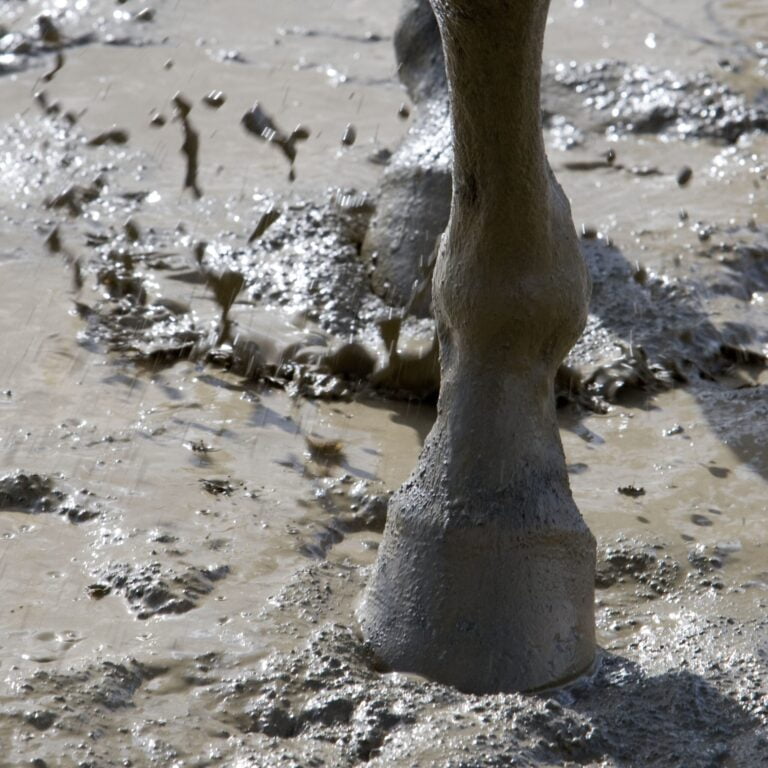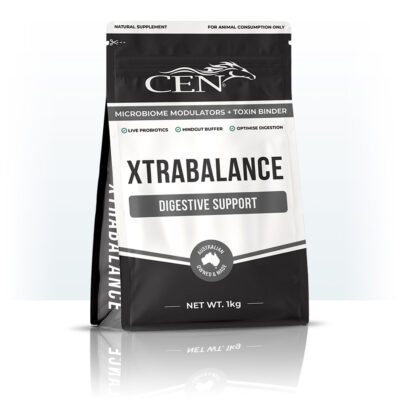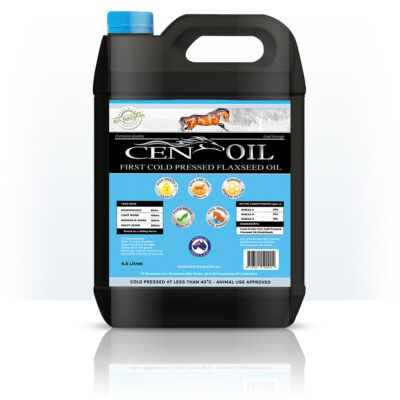
WHAT IS MUD FEVER?
Mud fever, also referred to as scratches, greasy heel, or pastern dermatitis, describes an inflammatory and often painful condition that usually affects the lower limb region of horses.
It is likely to develop during particular times of the year or during certain weather events; more commonly seen during periods of wet weather where the horse is exposed to waterlogged soil and muddy surfaces, as well as damp pasture and bedding, for prolonged periods of time.
SIGNS & SYMPTOMS OF MUD FEVER
Equestology Sport Horse Science (2018, para. 2) writes that “clinical signs can range from inflammation, hair loss, scabs, cracked and ulcerated skin, to granulation tissue, discharge and generalised swelling of the lower limbs and associated lameness.”
Visible symptoms of mud fever may be similar to other skin conditions caused by allergies which can result in a misdiagnosis, highlighting the importance of performing a thorough examination of both the horse and the surrounding environment.
Horses with non-pigmented skin, such as those with white ‘socks’ on their legs, and horses that have feathering at the fetlocks, appear to be the most commonly affected when it comes to mud fever (Canberra Equine Hospital 2020).
The long and thick fetlock hair generally seen in heavy breeds can hold moisture and keep the skin damp which reduces skin integrity and provides an opportunity for bacteria and fungi to accumulate and take hold.
The pathogens that are most commonly linked to the development of mud fever in horses include bacteria such as Staphylococcal spp. And Dermatophilus Congolensis, moulds and fungi that produce toxins called Mycotoxins, and organisms such as mites which are more commonly seen in feathered breeds such as Clydesdales and Friesians (Equestology Sport Horse Science 2018).
Mycotoxins are a particularly common cause of mud fever in horses when they are housed in hot, humid, or moist climates; which are the optimal habitat for Mycotoxins to thrive.
Mycotoxins binders (such as those found in CEN XtraBalance) can be extremely useful dietary additives to alleviate the symptoms of Mycotoxicosis. Less common causes of mud fever include fungal infections of the skin such as Dermatophytosis, worm larvae infestations, vasculitis, liver disease, pemphigus foliaceous, and coronary band abnormalities (Equestology Sport Horse Science 2018).
RECOMMENDED PRODUCTS
-
Rated 5.00 out of 5$69.95 inc. GST Select Options This product has multiple variants. The options may be chosen on the product page
-
Rated 5.00 out of 5$66.95 inc. GST Select Options This product has multiple variants. The options may be chosen on the product page
CAN NUTRITION HELP PREVENT MUD FEVER?
Nutritional imbalances or deficiencies may hinder a horse’s ability to maintain a digestive and immune system that is functioning at full capacity.
It is difficult to identify specific nutritional deficiencies that may cause a horse to develop mud fever, however it is logical to assume that diet has a significant impact on how a horse responds to inflammatory conditions. In an attempt to ease, alleviate or eliminate mud fever in horses, every effort should be made to assess the horse’s entire daily intake so that dietary changes can be implemented if and when necessary.
A diet that is lacking in mineral supplementation, essential fatty acids, digestible fibre, or any nutrient for that matter, may be contributing to a weakened digestive and immune system which may limit the horse’s ability to overcome inflammatory conditions when they arise.
An example of a mineral that correlates to skin health is the trace mineral zinc. Kohnke, Kelleher and Trevor-Jones (1999, p. 53) write that zinc is a “co-factor in over 200 enzymes in metabolism,” and that it is “essential in bone, cartilage and hoof formation and health of skin.” A deficiency or imbalance of zinc in relation to other trace minerals within the diet may contribute to poor skin and coat health, as well as dry, thickened skin that can result in hair loss in serious cases (Kohnke, Kelleher & Trevor-Jones 1999).
An example of a vitamin that may influence immune and skin health is the fat-soluble vitamin alpha-tocopherol, more commonly referred to as Vitamin E. Vitamin E is an antioxidant which can enhance a horse’s immune response when provided at high dosages (Kohnke, Kelleher & Trevor-Jones 1999). A deficiency of Vitamin E within the diet may contribute to symptoms such as subcutaneous swelling, a stiff gait, muscle weakness, and a rough coat (Kohnke, Kelleher & Trevor-Jones 1999).
Another highly important aspect to consider when attempting to alleviate or eliminate the symptoms that may trigger mud fever to develop in horses, is the essential fatty acid profile of the horse’s overall intake. While there has been no optimal omega 3:6 ratio established for horses, it is reasonable to hypothesise that they should receive an omega ratio that reflects their natural diet of good quality pasture, which is approximately 4:1 omega 3:6.
Where horses are grazing on poor quality pasture or are on a hay reliant diet, horse supplements which include omega 3 (such as CEN Oil) should be considered to ensure they are receiving more omega 3 than they are omega 6.
Written by Karly Eldridge
Equine Nutritionist
Sub-editor Bryan Meggitt (BMedSc. PGCrtMedSc.)
Senior Scientist and Co-founder of CEN Horse Nutrition
References:
- Canberra Equine Hospital 2020, Greasy Heel, viewed 1 February 2022,
Greasy Heel – Canberra Equine Hospital | Horse Vets - Equestology Sport Horse Science 2018, Greasy Heel/Mud Fever – 10 Steps to Effective Treatment, viewed 1 February 2022, Greasy Heel/Mud Fever – 10 Steps to Effective Treatment. — Equestology sport horse science
- Kohnke, JR, Kelleher, F & Trevor-Jones, P 1999, Feeding Horses in Australia: A Guide for Horse
- Owners and Managers: A Report for the Rural Industries Research and Development Corporation, Rural Industries Research and Development Corporation, Barton, A.C.T, Page 53.


